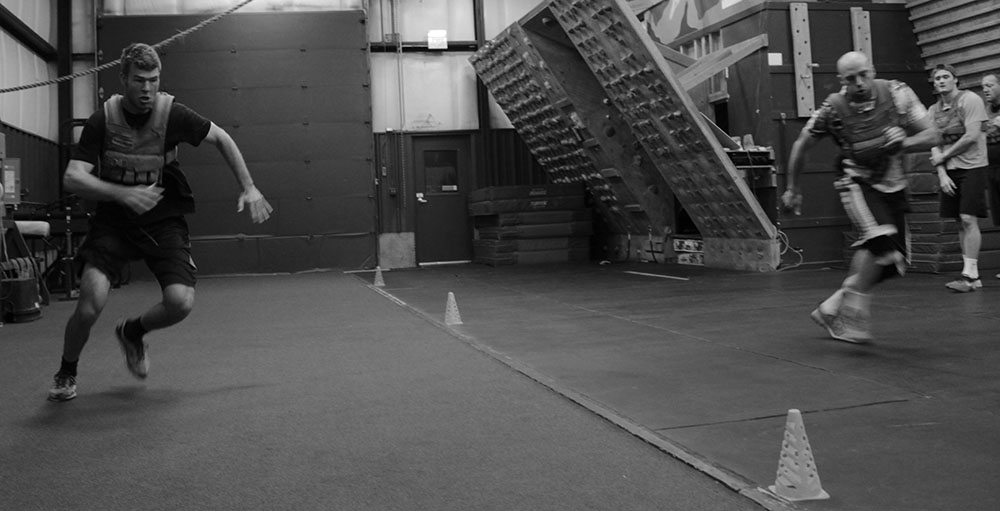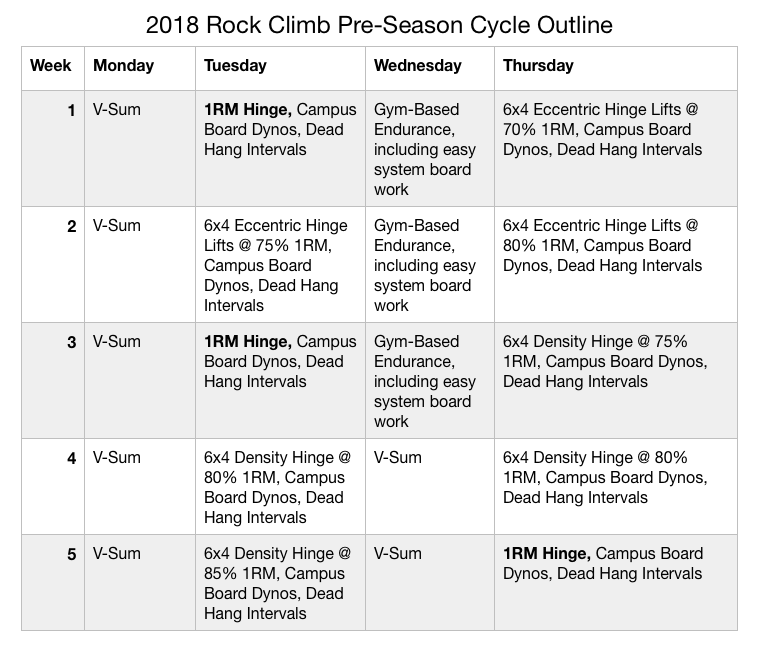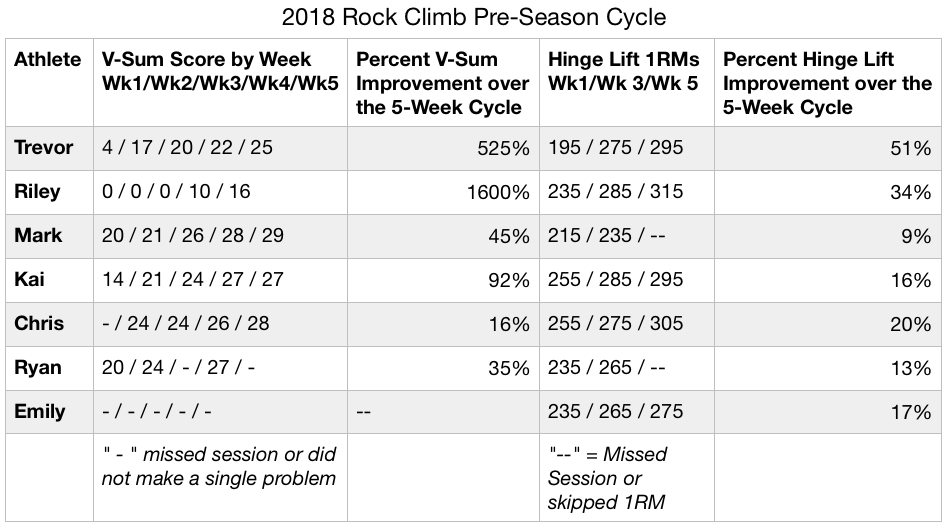QUESTION
What do you recommend for a 45 year old man?
Like to keep it to 30-45 mins. I’m not an athlete just a dad that sits at a desk all day.
ANSWER
I’m not sure we have anything for you.
We developed our
SF45 Programming for high impact mountain and tactical athletes ages 45-55, – however these sessions go 60 minutes for the gym-based sessions and longer for the endurance efforts.
Our
Busy Operator is efficient, but these sessions are designed to last 45 minutes.
– Rob
QUESTION
Question about training plans. If I’m just starting to train again and I’m looking for overall strength but will also be doing a few MTB races this year, what program would you suggest?
I also have limited equipment. I have 25lb dumb bells, a TRX trainer, and just ordered a plyo box. Also, will be making a weighted ruc this weekend.
ANSWER
Start our stuff with the Bodyweight Foundation Training Plan.
When does your MTB season start?
– Rob
QUESTION
I’ve been following your site for a few years now and sampled some of your programming. However, I was trapped in the CrossFit, weightlifting cycle that did it properly prepare me for my job and as a result my imbalances ultimately led to a severe disc hernia room and sciatica.
I had a discectomy of L5/S1 and some vertebrae shaving in December 2017 that I am currently recovering from.
The physio therapy is going well and they are properly strengthen the muscles I had neglected for years including the glutes and hamstrings.
I am a law enforcement officer attached to the Emergency Response Team in Ontario, Canada. I’m in the door step of 40 years old and therefore operating in a young mans game. However it is not time to pack in the heavy armour yet so I am looking for a program that I can commit to once cleared by the physio therapist.
I trust your research, agree with your methodologies and simplicity of movement standards. The surgery has been a life altering experience and I resolve to return to my ERT role stronger then ever in the important functional areas.
I live in Petawawa, Ontario which is home to the Canadian Special Forces Regiment and several other highly respected regiments. I train them annually in their escape and evasion selection phases and have the opportunity to learn from them and workout with them. I have access to the military fitness facility and therefor I do not have limited equipment issues.
Any advice on programming would be greatly appreciated.
ANSWER
It’s not clear from you’re note what you’re doing now in terms of training. My sense is you’re ready to start, but haven’t done any as of yet.
Then email back on the other side of the Low Back Fitness Plan.
– Rob
QUESTION
Do you recommend which training plan for young swimmers 10-15 years who would train 2 times a week?
ANSWER
– Rob
QUESTION
I am prior Marine Corps infantry, and I’m planning to cross decks and re-enter active service with an 18X contract. Im using the GI Bill and graduate college in May of 2019. So I won’t be attending SFAS for at least 15-18 months. I was considering your Ruck-based Selection (SFAS) training packet, but the description says to use it with exactly 13 months prior to selection. Here’s what I’m looking for
-a program that prepares for selection
-develops operator fitness
-also has strength based training (for aesthetics)
What would you recommend?
ANSWER
If you’re fitness is suspect, start with the Military OnRamp Training Plan and them move Hector, then when it’s time, start the Ruck Based Selection Training Packet plans with Humility.
– Rob
QUESTION
I heard about you from my Denver son who was amazed at his skiing endurance after following one of your plans.
I am 69 and planning to hike the 75 miles of the Georgia AT and the JMT in August. Pack weight will be 30 – 40# depending on food-days to carry.
I ordered the Backpacking – Pre-season training module.
Do you have any suggestions/modifications specific to seniors?
Also any thoughts on nutrition/energy needs senior specific.
I have been training with a short and long hike each week and can average 2 mph with the full pack over 15 – 20 miles.
Thanks for any advice or references.
ANSWER
We design our training plans based on the event, not the athlete. So in general, no. The programming is the same, though you may need to stretch it out to allow for more recovery days.
Nutrition? No. Our general guidelines apply. More
HERE.
– Rob
QUESTION
I am starting ABOLC on Monday at Fort Benning. I have no problem passing the APFT and know that BOLC will whip me into running shape real quick. However, I will have access to world class training facilities at Benning that have great areas for Olympic lifting, rope climbing, sled drags, and other types of functional fitness that I don’t usually have access to at home. What plan would you recommend to take advantage of those facilities that I can do in addition to normal unit PT everyday? I want it to be mostly focused on strength, Olympic lifting movements, work capacity, and explosiveness. I am a police officer back home and don’t want to get too skinny and endurance focused while I’m here like Army PT tends to do to people.
ANSWER
I’d recommend you work through
Bourbon, from our Sprits Packet of plans for LE. This plan trains strength, work cap, and hypertrophy. Super Squats and Super Bench are awesome!
Good luck.
– Rob
QUESTION
I’m very interested in your programming but feel that I’m so out of shape (literally starting from scratch after undergoing two leg fasciotomies since Sept) all of the programs would be too difficult.
Background: 48 year old RN, have not worked out consistently since May 2017. Long hx of sports/ortho injuries: partially torn rotator cuff, low back pain/multiple back issues, two knee surgeries, arthritis in knees/ankles/back/shoulders plus two open heart surgeries (ok to exercise with no restrictions).
Played soccer x 12 years, volleyball x 15 years, followed by 10+ years of trail running/cycling/triathlons/skiing in 20s-30s. Have won two National Championships in Volleyball so I know what hard work looks like.
Inconsistent exercise since 2005 due to having child, two heart surgeries, random overuse injuries.
Despite all this I want to get my fitness mojo back but don’t do well with high impact/high intensity stuff due to lack of fitness. Tend to get injured if I go out too hard/fast.
Any ideas? Literally going from couch to athlete.
ANSWER
My guess is you’re not ready for our stuff.
What is good about this plan is it deploys an initial assessment and then scales the follow on strength work based on your assessment results. Which means it automatically scales to your incoming fitness.
There is some running in the plan – which you could walk/run, as needed until you get tuned up.
Anyway, look at the programming and if you’re game, try the first week and see how you do. If you get crushed, spend 3-6 weeks walking/running/riding, and doing bodyweight stuff, then come back to it.
– Rob
QUESTION
I just have a couple questions!
I’m usually a big gym rat. I like to lift heavy things and smash weights together and my run time was mediocre. Unfortunately, being “big and slow” is not conducive to being in the Army.
I was just recently deployed and actually just came home Monday. While downrange, I became introduced to functional fitness. So started that along with still pushing weights and found myself not only getting stronger but getting faster too. Shredding pounds was an added bonus! I became leaner and was still able to maintain my mass and became a big fan of functionality. Midway through the deployment, an officer I work with had me do the MTI Work Capacity program with him. I never did finish the work capacity due to work constraints but would like to attempt to do it again and actually finish now that I’m home.
My first question is what program do you suggest that I can do to continue this new level fitness? After the work capacity, I’ll be looking to do something else. Hopefully something that I could have no problem doing even sporadically since being in garrison can be more hectic than being deployed and we’re going to be gearing up for a field and another deployment soon.
Second question is what do you recommend for someone who’s level of fitness is non existent? My wife is looking to start working out and would like to shred weight along with getting fit. Eventually I’d like her to workout along with me but am looking for something to start her off with.
Thanks for your time and I apologize for these inane questions and wasting your time.
I hope this email finds you well!
ANSWER
You …. Work through the plans and order in the
Greek Hero series of plans, beginning with
Hector. These are designed as day to day programming for military infantry, SOF, etc., and concurrently train strength, work capacity, tactical agility, endurance and chassis integrity (core).
– Rob
QUESTION
I just signed up for the athlete subscription. I am currently training for a 50k trail race at the end of June. It has a 5000 ft elevation gain and loss. I am all set with the running part of my training, but I am looking for strength work to complement it. I work full time and have 4 kids (i.e. not a lot of time for training). Which program would serve me best – and be most time efficient? Thanks!
ANSWER
Complete the strength work in the
Ultra Pre-Season Training Plan. It’s scheduled as 2 days/week, and includes barbell-focused gym-based strength and bodyweight-focused leg blaster progressions to help prepare you for the eccentric hit you’ll get during your race/training.
The running in the plan will also work for a 50K, if you want to switch to it.
If you’ve got equipment issues and can’t get to a gym, complete the Tuesday, Wednesday and Friday sessions of the
Peak Bagger Training Plan. You’ll need a pair of 15# dumbbells, and a 40# sandbag.
Email questions.
– Rob
QUESTION
My partner referred me to one of your core programs to strengthen my core and back – I am almost complete this.
I would like to focus next on building muscle, strength and introducing interval running into the mix. Could you please point me in the right direction?
ANSWER
I’d recommend
SF45 Alpha. This plan trains strength 3 days/week, includes shuttle sprints and has a 6-mile run assessment with follow on 2-mile repeat interval efforts.
– Rob
QUESTION
I am currently a Navy EOD tech. I have been a member for 10 years back when the daily sessions were free. You guys trained me into shape for and through my EOD career. I love all that mountain/military/LE and beyond has offered. You guys are great.
I now have a big life change with lumbar fusion surgery this month. I was looking for your recommendations for after I finish PT to help me back into life post surgery(I realize at this will take months or years). And if you have any good reads to help encourage me through this big life change.
(I have completed the lower back V2 x3 times for my own needs due to long term back issues.)
Thanks for everything and don’t stop what you are doing. It is impacting people.
ANSWER
Sorry about the surgery and I’m glad we’ve partnered with you during your career. It’s an ultimate compliment for us.
Your back … understand I’ve never directly worked with someone who has had a lumbar fusion – so take my recommendation with that in mind.
Email questions.
– Rob
QUESTION
I wrote the other day inquiring about your rucking specific training plan. Can that be scaled to add mileage? A group of friends and I will be rucking the Marine Corps Marathon to raise money for charity (EOD wounded warrior).
26 miles is quite a lot longer then I’ve ever rucked, either in training or combat. I’ve heard nothing but good things about your programs and was hoping you all could provide some assistance. If the program needs to be modified I am willing to pay accordingly to offset the added input.
Also, what would be a good strength program to run concurrently with the rucking?
Thank you all for your time and assistance in this manner.
ANSWER
For your event, I’d recommend the
Meathead Marathon Training Plan, and simply ruck, instead of run while completing the plan. Strength training is included.
– Rob
QUESTION
Regarding time lines and the SFAS PACKET: It appears I will need to attend Army Basic Training as a part of my training timeline. So, my proposed training pipeline is: Basic(OSUT 14 weeks) —> AIRBORNE(3 weeks) —> SFAS (or thereabouts – includes “prep” courses prior to hammer drop). The packet instructs plan employment 36 weeks out from SFAS.
Do you have any suggestions in regards to adjusting this plan/packet for the above timeline?
Please advise.
Thank You.
ANSWER
I recommend guys with schedules like you complete the entire
packet before Basic. The reason is you don’t know how much time you have to train on your own, once you’re in … likely none at Basic, and it’s unclear at Airborne. You’ll lose some fitness before SFAS, but it’s the best we can do with your schedule.
– Rob
QUESTION
I want to start off by saying I see great results using your programs, and have recommended you to multiple friends looking for new workout programs. I especially enjoy the Busy Operator programs as they fit my schedule perfectly.
I’m looking for advice on maintaining APFT readiness, while still conducting the Busy Operator program (or other programs). I generally know when an APFT is on the schedule, and take the weeks prior to dedicate solely to APFT prep. Do you have any recommendations on how to balance being ready at any time for an APFT (certain positions, new opportunities may arise needing an impromptu record APFT), while conducting other workout programs simultaneously and still seeing results?
Any advice is appreciated. Thank you again, have a great day.
ANSWER
This is a common question and the short answer is not well.
There’s a cost to Mission-Direct Fitness by being ready to max the APFT at any time. The APFT does not assess mission-direct fitness, by our definition – yet preparing to max it takes dedicated work.
None example … push ups. Being good at push ups involves technique and strength endurance. Even though bench press and push ups both hammer the chest and triceps, having a high max bench press will not transfer directly high push up reps, and vice versa.
This is the reason we built our sport-specific APFT plan and other sport-specific plans. As well, rarely is there a surprise APFT. Guys will get at least 3 weeks notice, which if you’ve been doing our Operator Sessions, Busy Operator or other day to day programming, is plenty to do a focused APFT prep cycle.
Why not always do 2-a-days, where you’ll train for mission-direct fitness in the AM, and APFT fitness in the PM? Time, overtraining and burn out.
What could you do? You could add in push ups and sit ups 2-3 times a week at the end of a session, if you’d like. But this won’t be enough to maintain a perfect score on these events, and the extra work will take away from my other programming.
Why not just train for the APFT all the time? Burnout, overuse, and boredom, plus the main fitness areas missing in APFT prep are relative strength, chassis integrity, hard, short work capacity and the ability to move under load (rucking).
So I’d go back and challenge the need to be ready for an APFT at any time. This is really a concern and need? You won’t get 3-6 weeks notice first?
– Rob
QUESTION
I just signed up for the monthly subscriptions and am super excited to get started. Love the fact that there are so many options and programs to choose from. That being said there’s a lot to pick from but I couldn’t find anything specific to my area.
I am training for day to day police dog handler and am looking for the right program. There are a lot of quick sprints then stop while the dog reacquires the track then go hard again. That’s the typical track and usually 2-3km; however, there have been a few occasions where we end up running in excess of 15km. Terrain is usually hills, swamps and long grass. In addition to the running, holding back a 90lb German shepherd and helping to boost him over fences while trying to stay balanced is a challenge in its own.
Any recommendations to get me started?
ANSWER
I don’t have a K-9 Handler specific training program, but your the second K-9 Handler to ask and I’m investigating the difference between your fitness demands and that of patrol/detective. Our Police/Detective program includes sprint-based work capacity, relative strength, work capacity, upper body hypertrophy and tactical agility. The main fitness attribute missing you describe is the 15km endurance need.
For this I’d look at our current full time SWAT/SRT programming in the
Gun Maker Training Plans. These include the fitness demands of Patrol/Detective, minus upper body hypertrophy, but adding in an endurance element.
From these plans I’d recommend you start with
Ruger, which trains Relative strength, Sprint-based work capacity, tactical agility, chassis integrity and endurance running out to 6 miles.
Respectfully,
– Rob
QUESTION
I have done your training program before, when I climbed Denali. For the last few years I haven’t done any strength training, got caught up in ashtanga yoga. Im planning to climb Everest in 2019 and have to start basically from scratch. I have a climb ( for training with serpa and guide) coming up in September and want to know where to start . I am a 52 year old 126pd woman. Please guide me.
Thanks
ANSWER
13 months = 56 weeks. Here’s what I recommend:
Weeks Plan
7 Total Rest
15 Total Rest
23 Total Rest
30 Total Rest
37 Total Rest
44 Total Rest
47 Total Rest
The mountain base plans include rock climb training – you won’t need this for Everest, of course, so you can skip these sessions if you like, or keep them for variety.
– Rob
QUESTION
I am currently trying to prepare my body to be able to successfully complete the TACP school house course. I have been using the Pull-up/ Pushup improvement plan along with the bodyweight foundation plan with great success. Provided my form does not deduct the rep counts, I am able to pass the Battlefield Airmen PAST requirements without issue.
Through reading the website and other military boards, I realized that the school will require a large running and rucking capacity in order to succeed. I noticed that the TACP program is designed to be used directly before being shipped to BMT, which would be about 6-7 months from now for myself. The pathways that I was considering to follow were:
1. Start with the running improvement plan and military on-ramp program, progress to the rucking improvement plan and finally do the TACP training plan.
Or
2. Start with the military on-ramp program, progress to the virtue series and finally the TACP plan.
One point I noticed I am struggling in is cardiovascular and anaerobic strength specifically in situations like smoke sessions and fast paced, long distance runs. During the practice PAST, the weakest point was definitely the 1.5 timed run.
I understand I am placing myself at a disadvantage by attending a heavy running and rucking course, but with the correct guidance and determination I hope to be able to successfully pass the selection.
ANSWER
– Rob
QUESTION
Hi just looking through the plans and im looking at doing your Run improvement plan as im been out for two and a half years with having ligament reconstruction on both Ankles .Im a 40 year old soldier and now wanting to get fitter as im no longer able to keep up with the young thrusters that are up and coming through the Ranks my last mile an half was 13:30 before the operations it was 10:30.
Can the above mentioned plan help me to get down that time back to 10:30 also looking at some of the other plans anything to do with barbells is completely alien to me so looking for a plan that can help with strength and to protect my body .
ANSWER
The Running Improvement Plan deploys assessments, and then bases your follow-on progressions based on your assessment results. In this way, the plan automatically scales to your incoming fitness and continues to push you as you work through the plan.
Will it get you down to 10:30? I can’t say. You’re looking at 30% improvement from your last assessment. Generally, we’ll see a 15-20% improvement.
Also – the
Running Improvement Plan is not solely focused on the 1.5 distance. The first 5 weeks of the plan are focused on this distance, but then the focus jumps to 3 miles for weeks 6-10, and 6 miles for weeks 11-15.
The plan does include, effective, but simple strength work using bodyweight and dumbells.
– Rob
QUESTION
Which programs do you suggest for someone who has access to just your run of the mill gym. I can do Olympic type lifting and your traditional weights, but don’t really have access to sandbags or anything too crazy like that. Also, I have a ruck. Just looking to establish a good base of fitness and improve on my apft.
Thanks!!
ANSWER
Look at
Humility, which is a limited equipment, intense program and requires a pull up bar, ruck and a pair of 25# dumbbells.
– Rob
Subscribe to MTI's Newsletter - BETA









